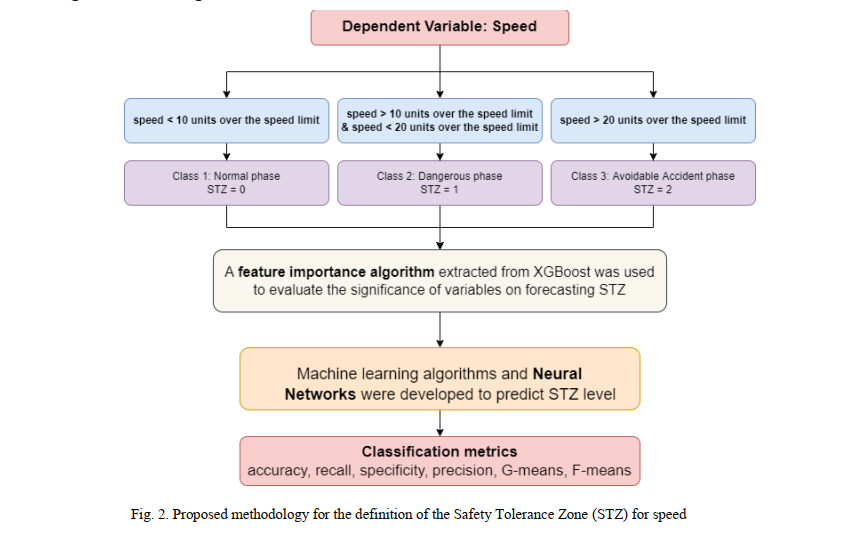
Several factors of driver state negatively impact road safety, such as distraction (in-vehicle or external), fatigue and drowsiness, health issues and extreme emotions. The aim of the current study is to define a Safety Tolerance Zone (STZ) for speed, and integrate crash prediction and risk assessment. A naturalistic driving experiment was conducted and data from a representative sample (N=20 drivers) was utilized. Explanatory variables of risk and the most reliable indicators were assessed. A feature importance algorithm extracted from Extreme Gradient Boosting (XGBoost) was used to evaluate the significance of variables on forecasting STZ. Additionally, a Neural Network model was implemented for real-time data prediction. Results indicated a strong relationship between the STZ level for speed and the independent variables of headway, distance travelled and medium harsh braking events.
| ID | pc480 |
| Presentation | |
| Full Text | |
| Tags |













